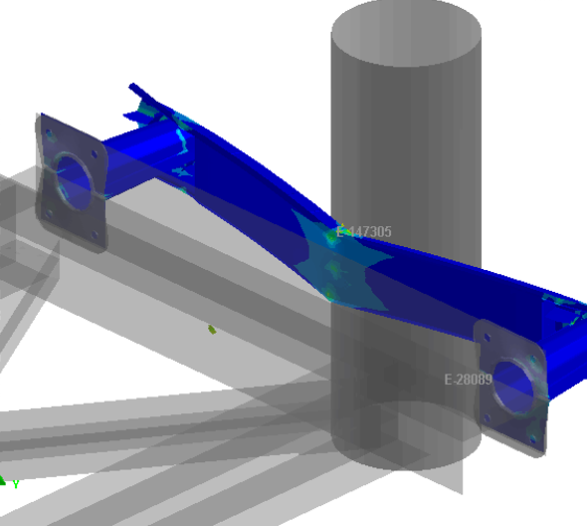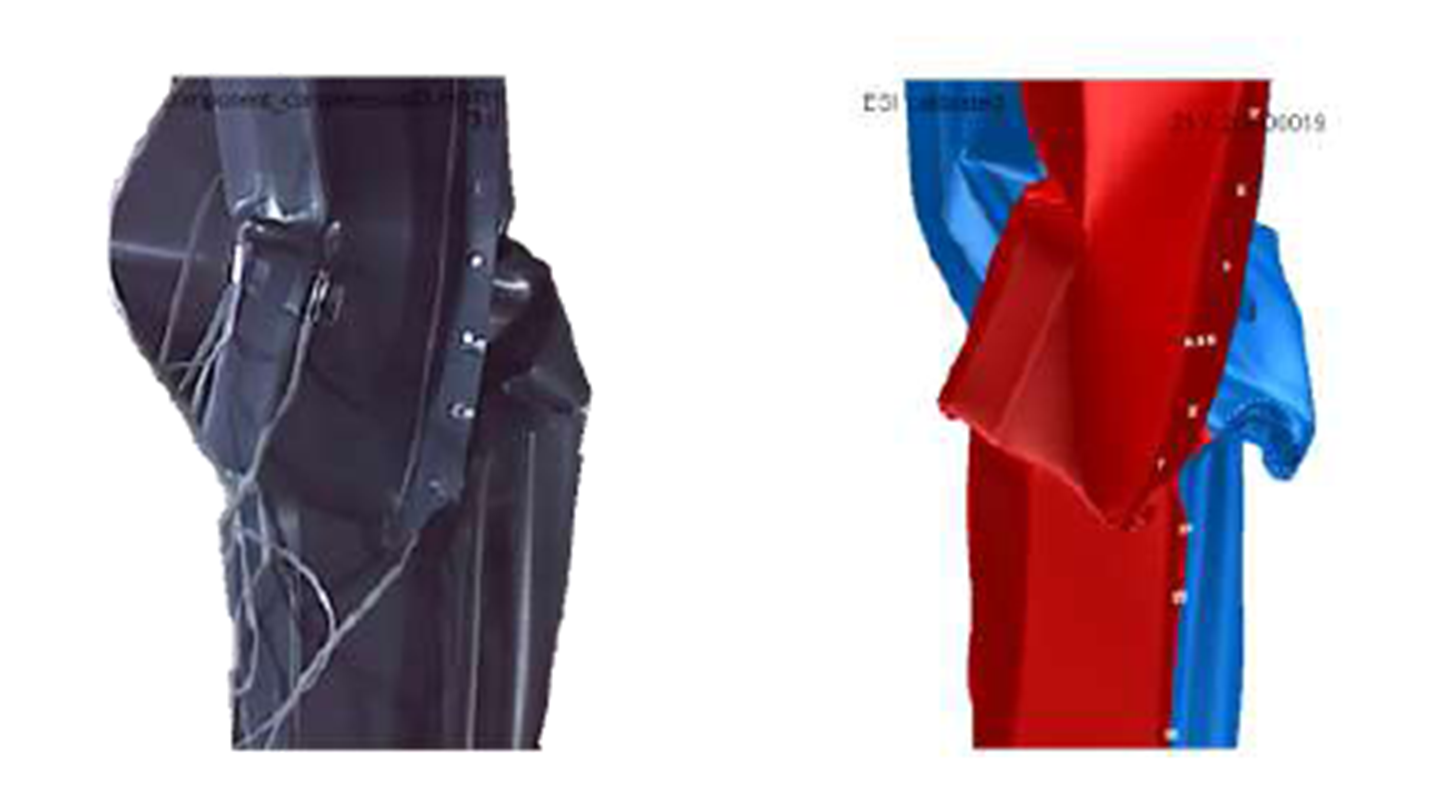If the potential of weight saving of advanced materials such as aluminum, high strength steels and composites is widely known the production difficulties and costs prevent their unique usage in a complete vehicle structure. Utilizing the most appropriate material for each application and component reveals to be the most efficient lightweight strategy.
ESI solutions have achieved a high level of recognition regarding End-to-End Virtual Prototyping of structures made of composite and metals, taking into account the manufacturing and assembly process for the prediction of the performance.
You can read more in the Lightweight yet Crash safe vehicle article published in February 2017.
End-to-End Composite Performances
VPS includes new advanced composite crash and strength models that enable prediction of the rupture behavior of composite parts and their capability to absorb energy during a crash. For more information on this topic please see our latest technical paper, presented at the 17th European Conference on Composite Materials (ECCM).
The accuracy of composite structural performance prediction is importantly increased by taking into account manufacturing effects, such as fiber orientation, that are inherited from the composite forming process.


The United States Council for Automotive Research (USCAR) has initiated a research group for the United States Automotive Materials Partnership (USAMP), consisting of General Motors, Ford Motor Company and Chrysler Group. The consortium’s work is supported by the US Department of Energy, and has the important objective of reducing the mass of vehicles. ESI was contracted by USCAR to work on a lightweight bumper design. Read more about this USAMP project.
This paper “Design and Analysis of Composite Front Bumper Crush-can System” co-written with General Motors R&D Center, Ford Motor Company, FCA USA LLC And M-Tech International LLC was presented at the 25th International Technical Conference on the Enhanced Safety of Vehicles (ESV), [When] June 5-8, 2017, Detroit, Michigan, United States
Multi-material joining
Finding new technologies to join composite and metallic parts, while ensuring a good crash and fatigue performance of the joining area, is a well-known challenge for the industry.
The new types of steel developed these recently generate new problems for predicting weld rupture. Spot weld rupture has an important influence on the crash scenario of steel automotive bodies. ESI proposes assembly solutions for multi-material joining, such as welding between standard and high strength steels, using a multi-scale approach to predict accurately the overall deformation and risk of crack propagation.

Read more about this topic explored with HONDA, and presented at Nafems world Congress 2015.
Several research projects aim also at developing innovative approaches using virtual prototyping to answer multi-material components challenge. For instance, the H2020 European project COMMUNION targets an increase of 30% in product performance. In COMMUNION, laser texturing will be used that can increase the shear strength by more than 100%, and the optimization of the texture definition will be performed through a multi-scale E2E virtual prototyping.
Find more information on http://communionproject.eu/
And read more about new performances challenges link to lightweight design.